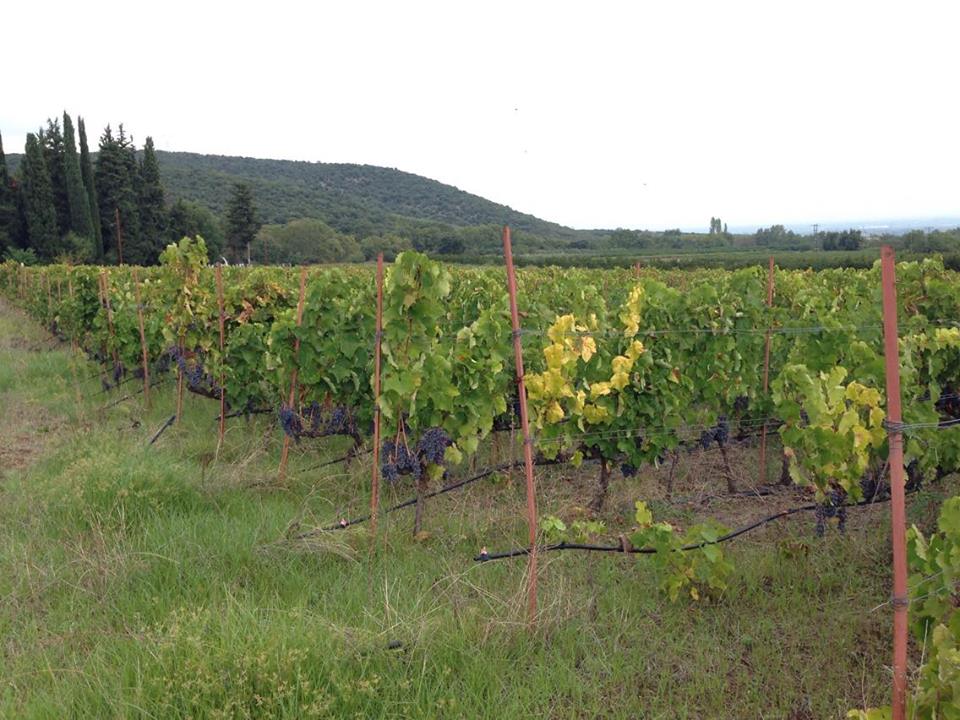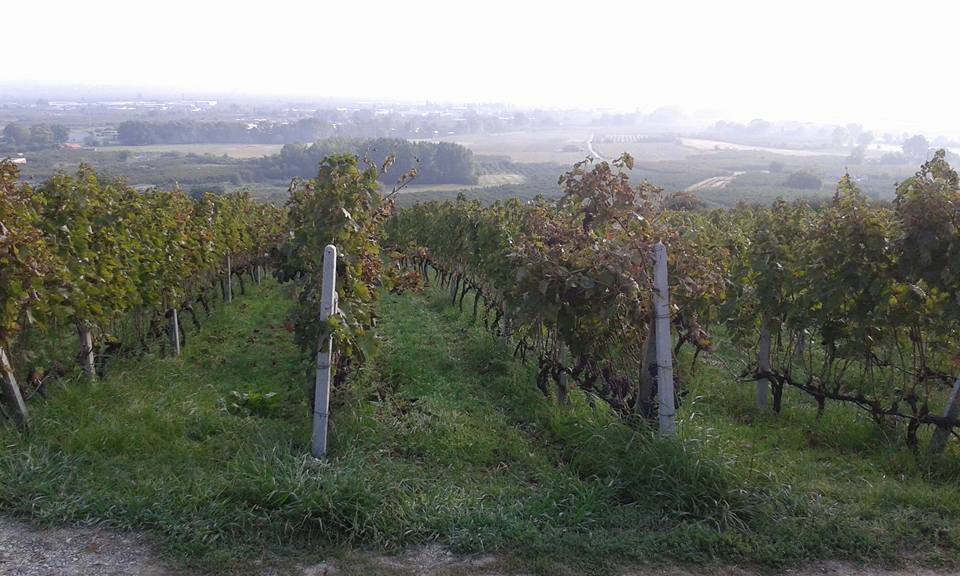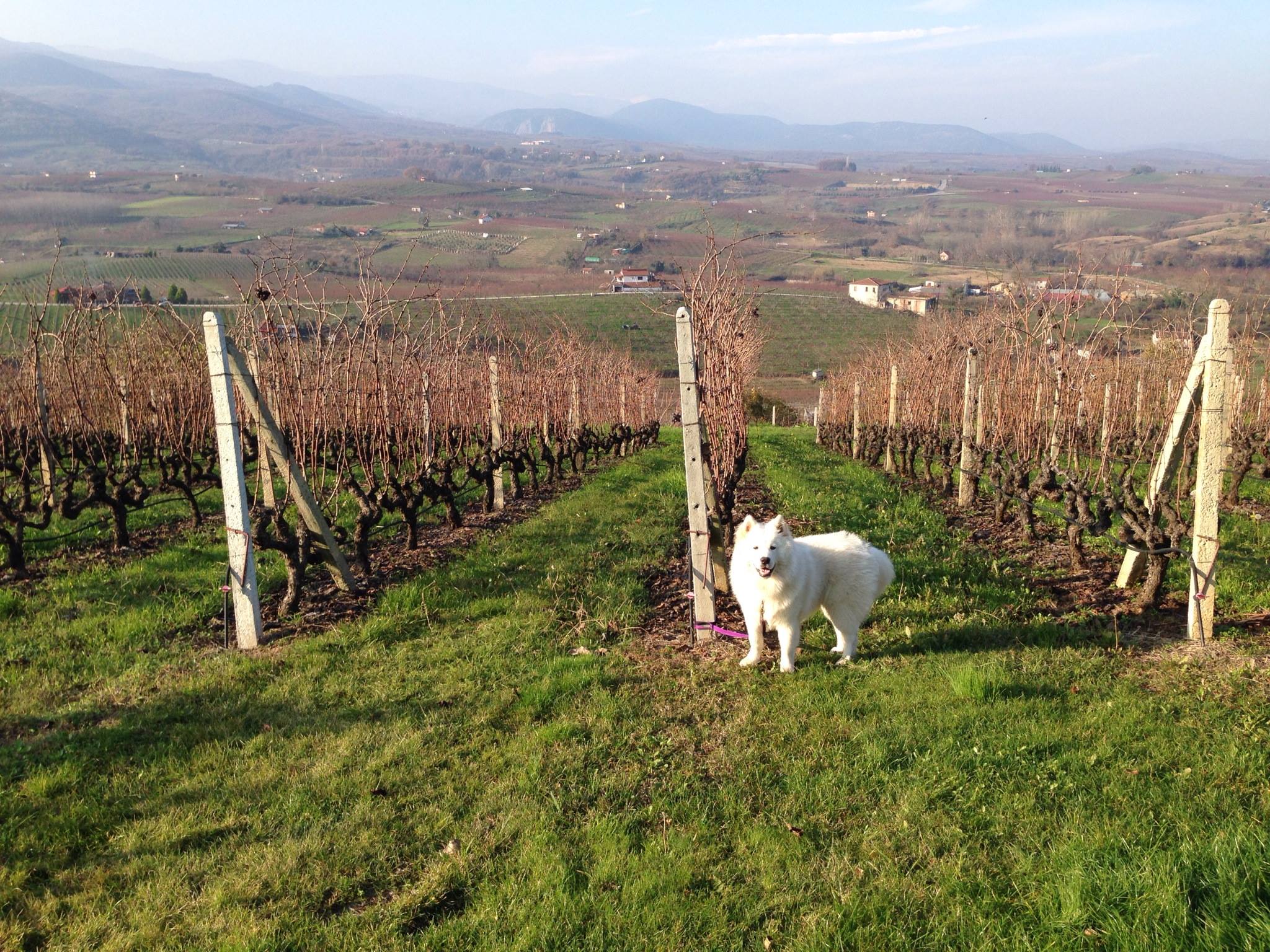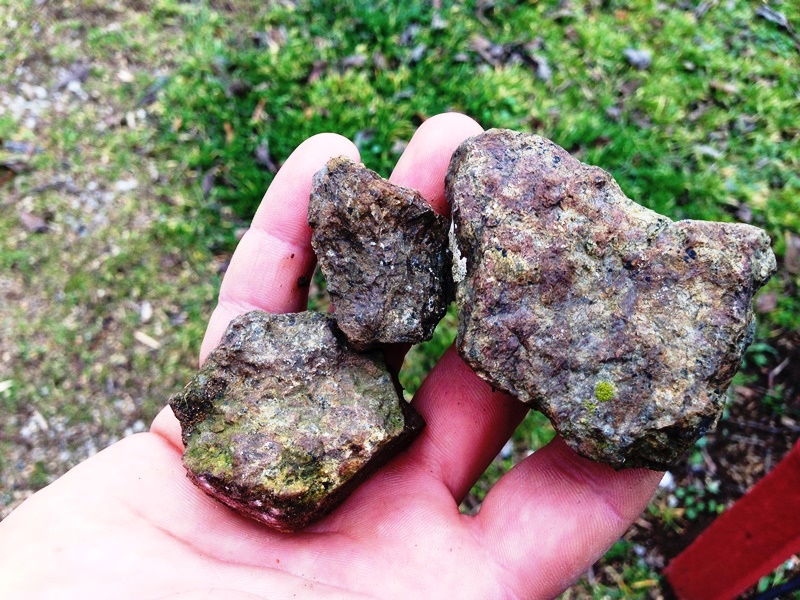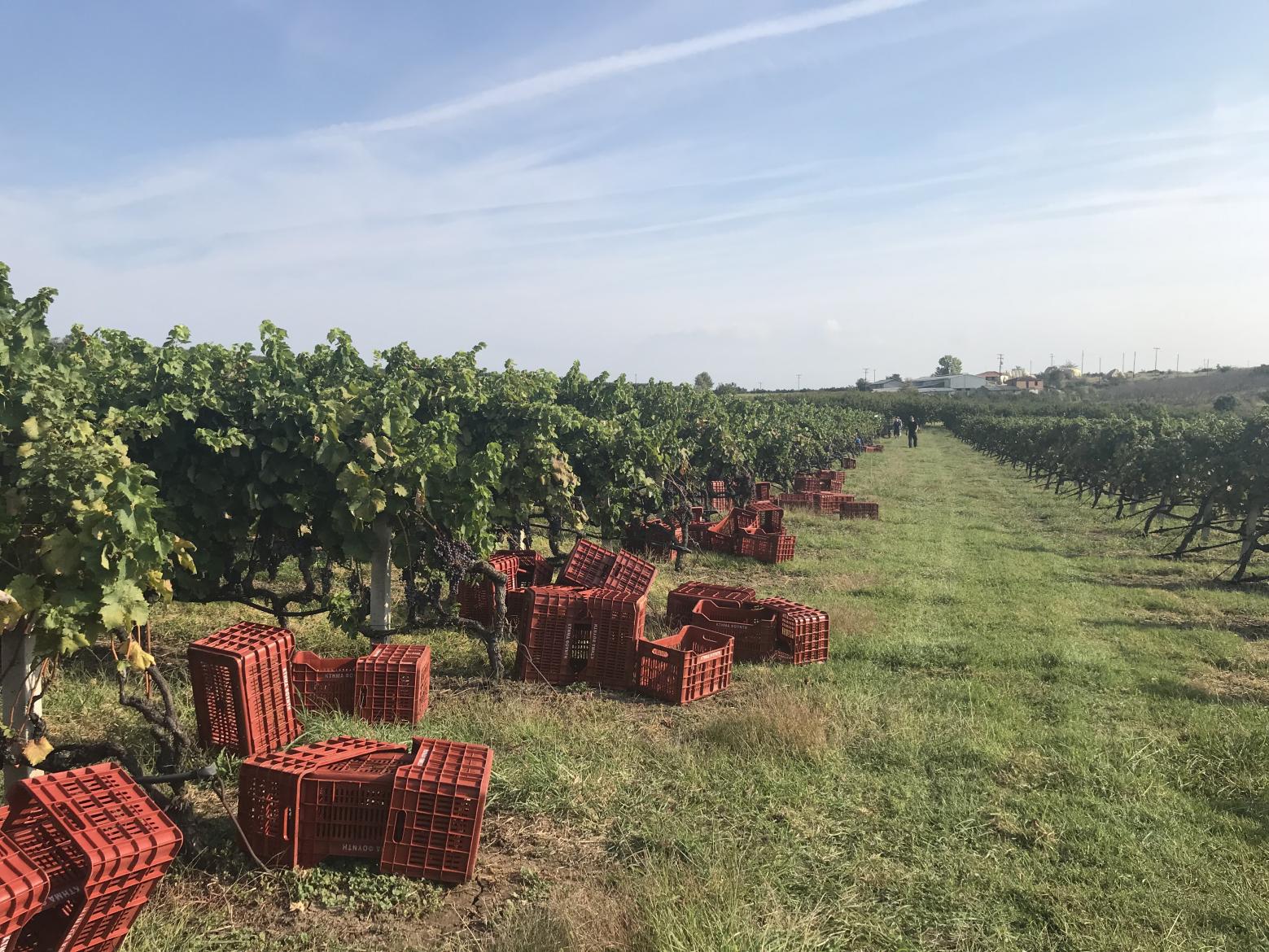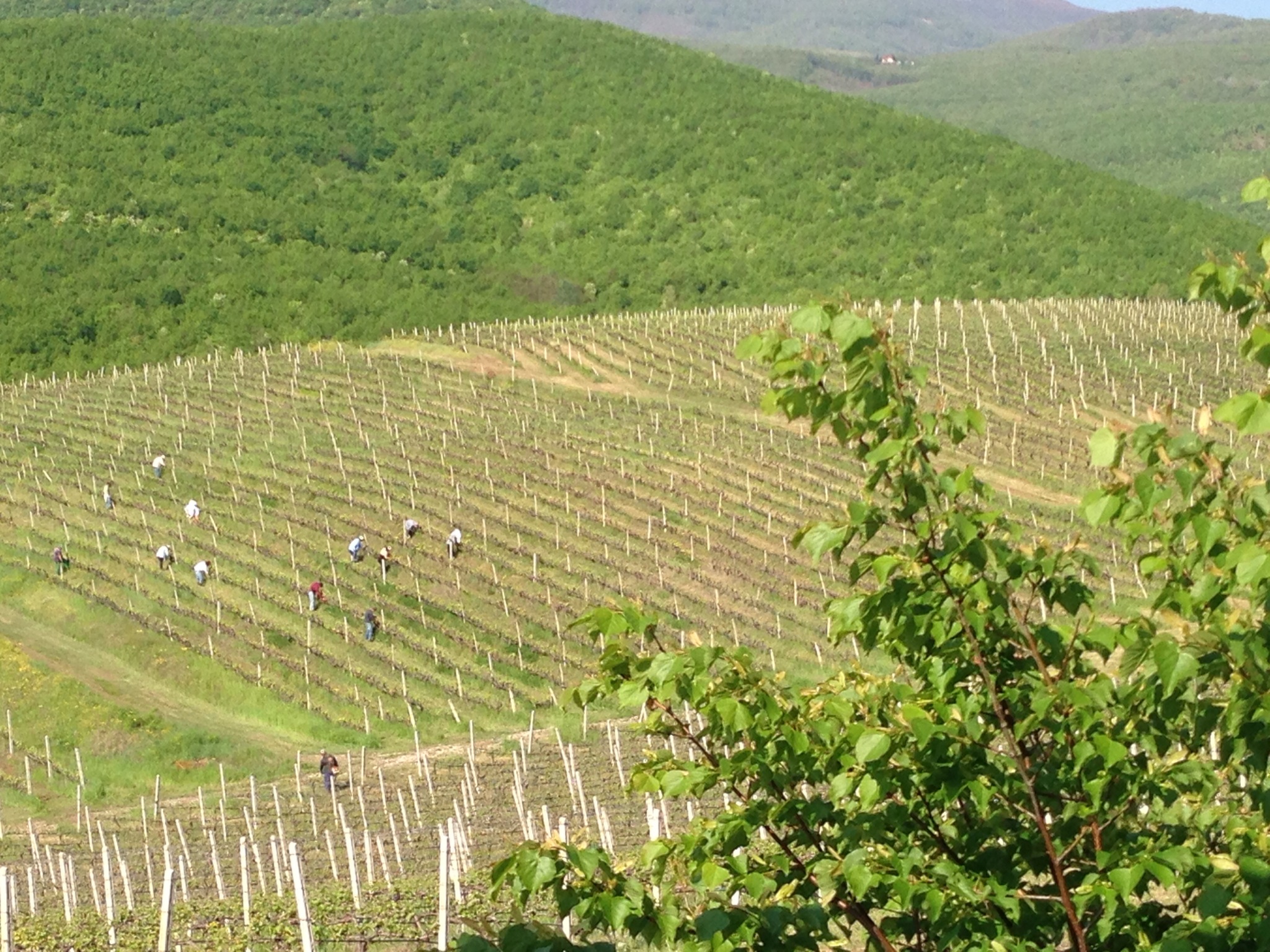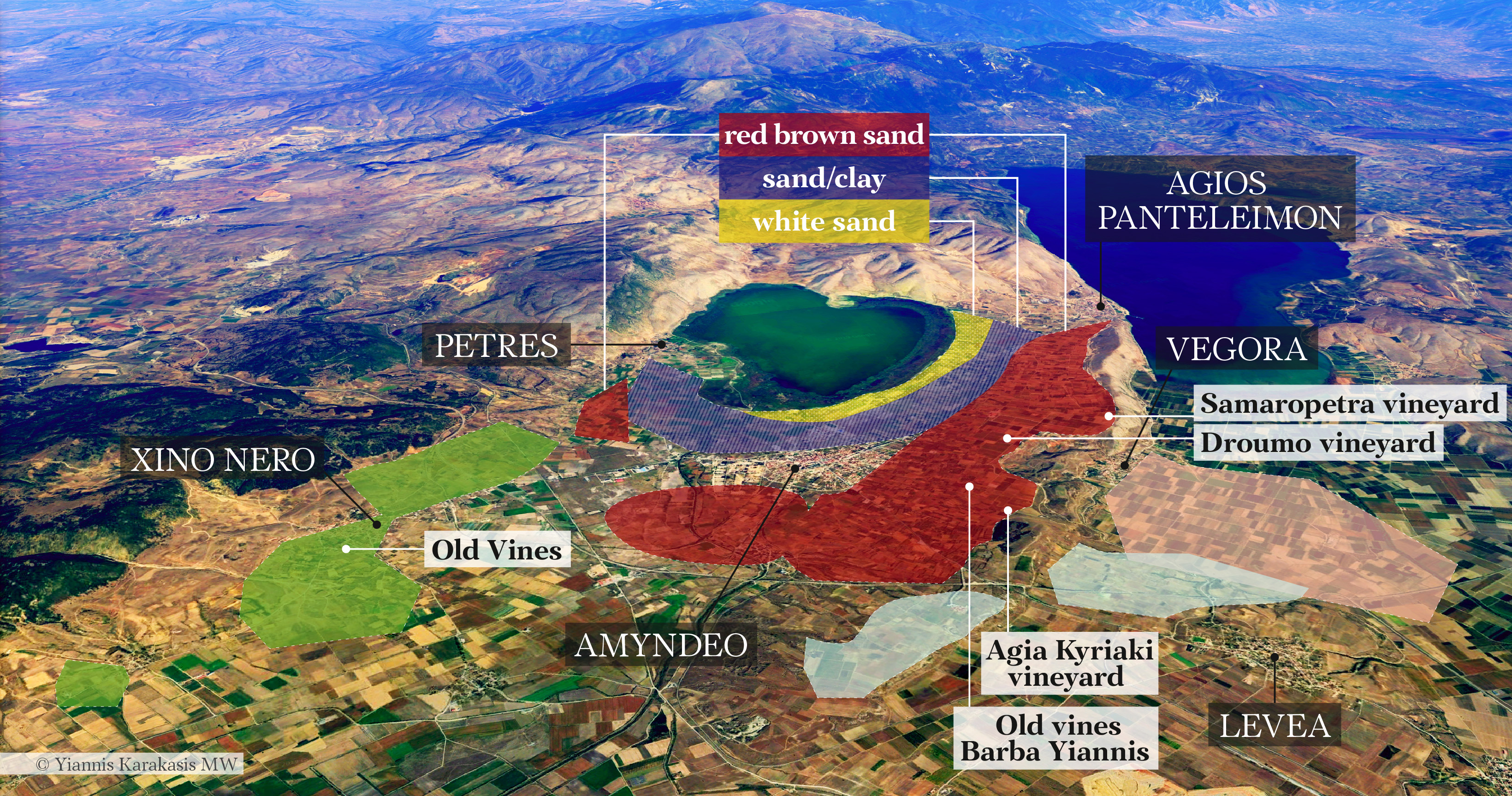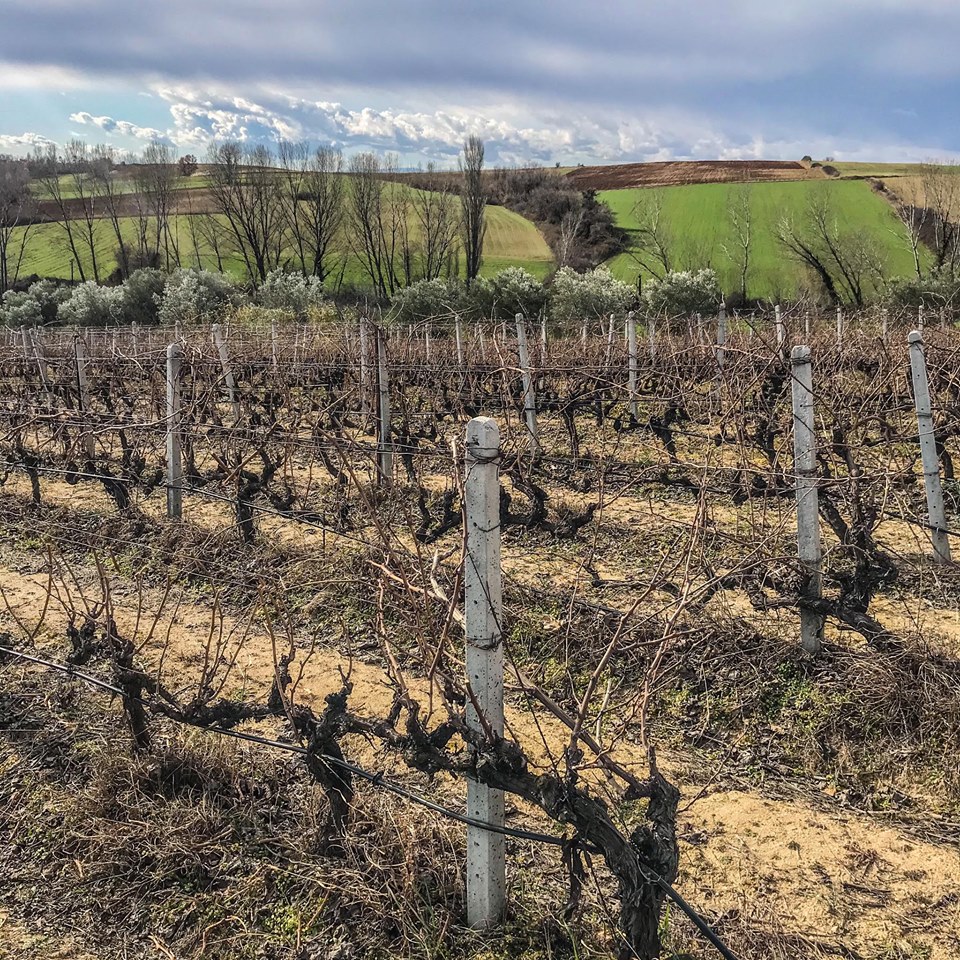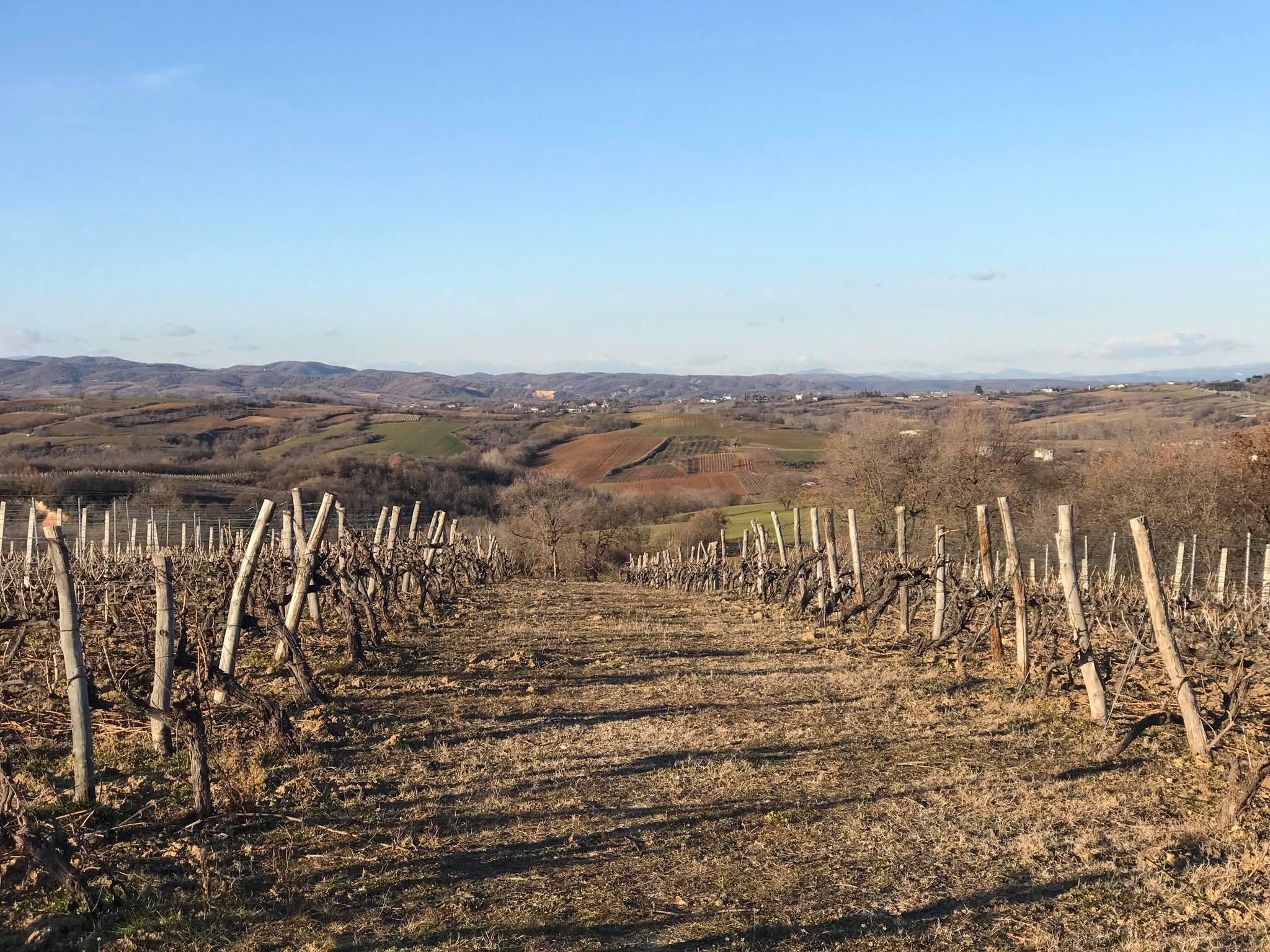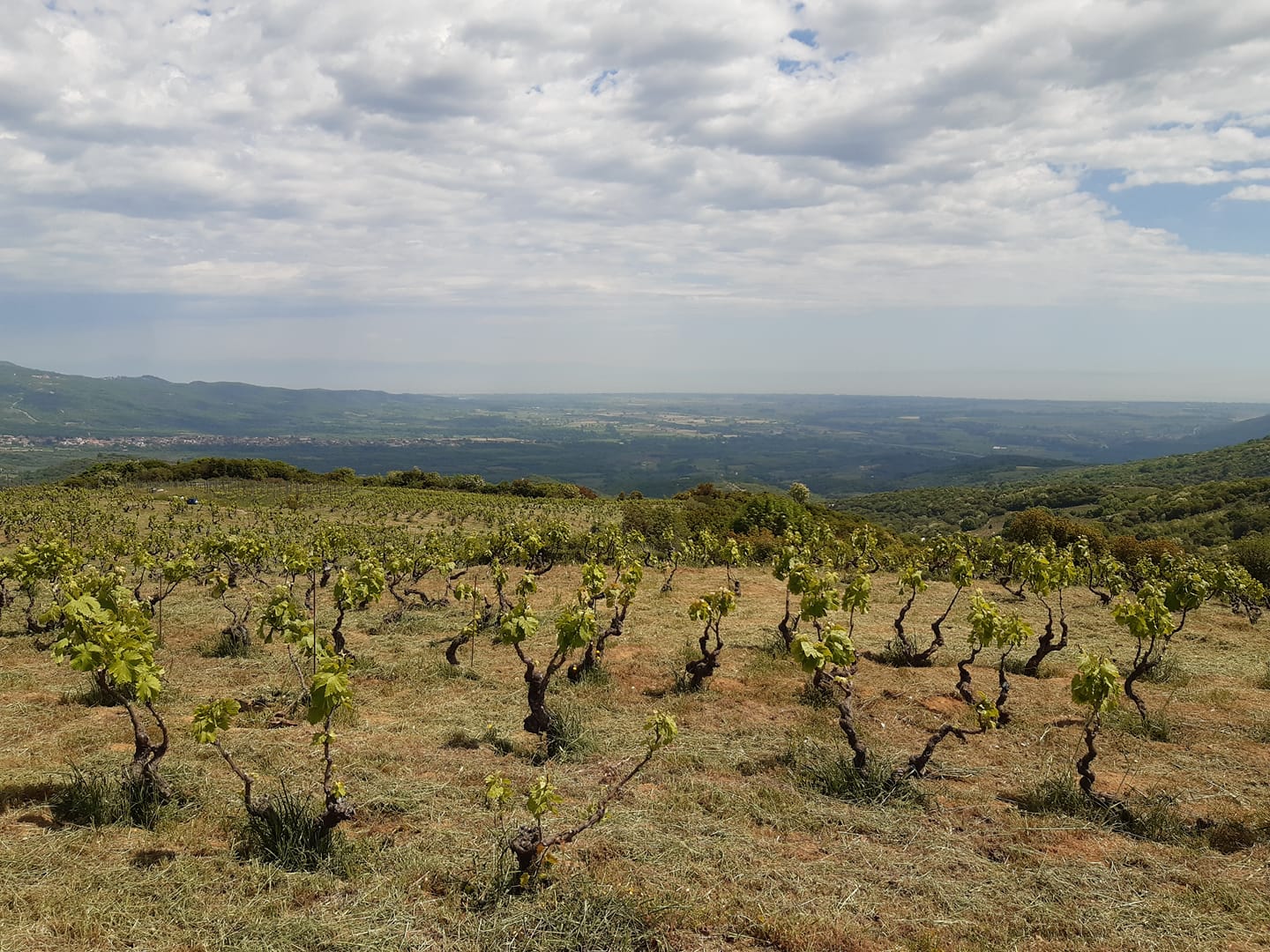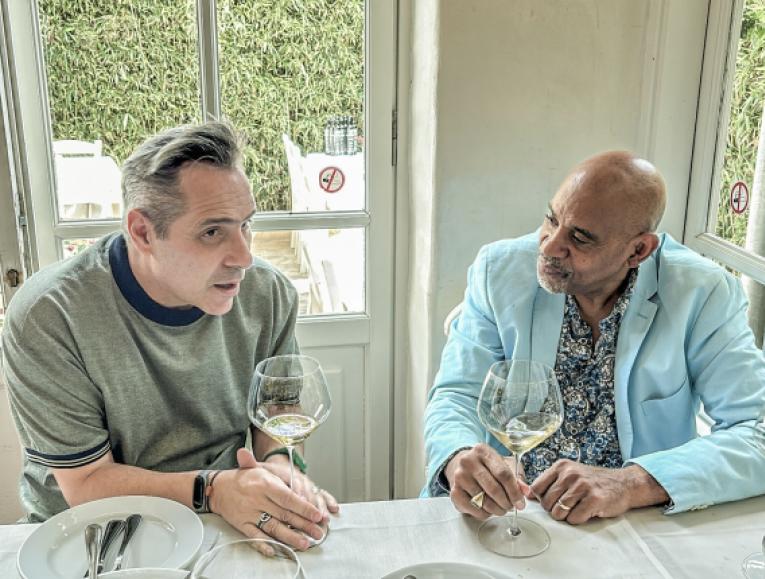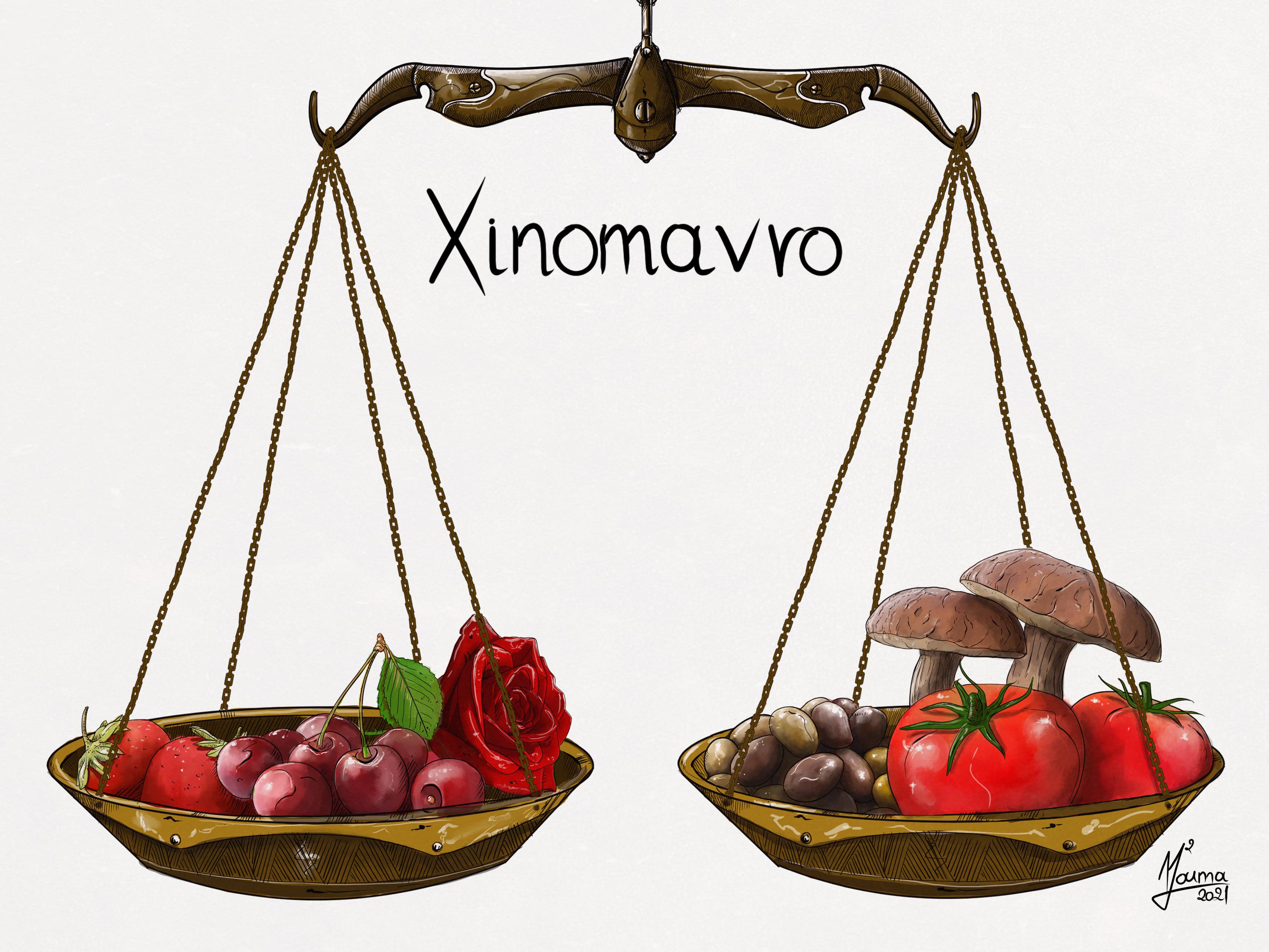
Xinomavro
By Yiannis Karakasis MW and Prof. George Kotseridis
In a Nutshell
Xinomavro is the prima donna of the Greek vineyard. If I were to describe Agiorgitiko as Steven Spielberg, Xinomavro would have to be Federico Fellini. Capable of producing sophisticated, intellectual wines that transport you to its place of origin. It is probably the Greek variety that has the strongest affinity with its terroir; it maintains a strong tie with its birthplace. For example, a Xinomavro wine from Naoussa is entirely different to that from Amyndeo, just a few km away, or from those of Rapsani and Goumenissa, the other two Xinomavro PDOs, which are also located in the northern part of the country.
It covers a significant part of the Greek vineyard with plantings of 2150 ha, which make it the third most planted red Greek variety after Agiorgitiko and Liatiko. However, for the latter, I have serious doubts about the numbers provided. We will certainly talk about this more when we discuss this wonderful Cretan variety.
Xinomavro is a capricious variety that is challenging both in the Vineyard (taming its high yields and ripening the fierce tannins) and in the winery (extraction and stabilisation of colour, as it is low in anthocyanins). Yet, despite the pitfalls, when the winemaker gets everything right, it can produce some of the most complex, highly refined and breathtaking wines, full of Greek aromas: dried tomatoes, olive tapenade and thyme, around a core of cherries or strawberries. Moreover, it is the Greek red variety that makes wines which easily age for twenty years, and which exhibit a consistent and impressive shift in their aromas that go from cherries/gooseberry in their youth to olive tapenade, dried tomatoes and even truffles after a few years of ageing.
In the Vineyard
Xinomavro has many synonyms including Mavro Naoussis (Black of Naoussa), Popolka (in Goumenissa), Mavro Xino or Naoustino (Stavrakas, Ampelography, 2010, pp343). It is a late-ripening variety that buds in the first half of April, flowers in late May, progresses to véraison in late July to early August and is harvested between September 10th and mid-October. Handling Xinomavro in the Vineyard is a difficult task. One needs to adhere to specific guidelines if quality wine is to be produced. To understand how it behaves, we should look at various viticultural factors. The data below are taken from my Research Paper on Naoussa (Yiannis Karakasis MW, IMW Research Paper on the rise of alcohol on Naoussa, 2015), that can be downloaded via the IMW website, and demonstrate the changes that took place in the area over the last two decades.
Yields: Xinomavro is a productive variety with the resulting yields affecting aromas of the wine; high yields augment vegetal characteristics, whereas lower yields highlight the fruity spectrum. To control yields and avoid the intense vegetal character, but rather gain aromas of cherries, strawberries and roses, the aim should be 50 hl/ha, i.e. around 6 to 7 bunches per vine. For this, either rigorous pruning is employed and/or green harvest, which is more efficient. However, severe pruning may create further problems because it increases vigour and the size and density of grapes.
Clones: in 1995, 20 different Xinomavro biotypes were identified for their unique characteristics. In 1997, 10 of them were retained and bred until today. Currently, 5 of the retained biotypes, (i.e. X1, X2, X3, X6 and X11) managed to pass all the tests and to become identified as healthy Xinomavro clones. Among them X3 from Velvedo and X6 from the Naoussa region show characteristics of earlier ripening and higher sugar content at harvest (Spinthiropoulou H, Stavrakakis M, Biniari A, Goulioti A, Marinos V, Dovas C, Κatis N, Leventakis N. (2003). Clonal Selection of the Greek Grape Wine Cultivar “Xinomavro” Lisbon, June 30-July 03, 2003) and have been used extensively in new plantings. Where vineyards needed replanting, X3 and X6 clones were planted after 2004 and until 2010. These clones demonstrate improved ripening characteristics and promote sugar accumulation.
Recently, evaluation of the performance of Xinomavro clones 19 and Ε2-Ε30 for the research project Hellenoinos (supervised by Prof. Kotseridis on the Greek varieties and the clones of the main Greek Varieties) for two consecutive years, 2018-2019, concluded that wines produced by clone 19 presented significantly higher anthocyanin levels, higher colour intensity, and better anthocyanin stability.
Rootstock: Traditionally 110R and 41B were used, but changes took place as well. Rootstocks of lower vigour in comparison to 110R, a moderately vigorous rootstock were planted, such as 3309 and 101-14. These rootstocks are likely to help curb Xinomavro’s growth and thus promote berry ripening leading to higher sugar in the must.
Training systems: Single or double cordon spur pruned is widely adopted. Leaf canopy height was traditionally approximately 60-120 cm high with the vine trunk reaching 30-60 cm. Over the last decade, several producers increased their canopy heights by 30-40cm on average, starting from the year 2000, thus increasing the effective leaf area per fruit weight, thereby improving ripening conditions.
Recently it was found that by adopting Lyre as a training system in vigorous vineyards, higher anthocyanin contents could be achieved in grapes resulting in wines with more attractive colour. On the contrary, vines of the Royat system might be more appropriate to produce full-bodied wines with higher ageing potential (Kyraleou, M., Kallithraka, S., Koundouras, S., Chira, K., Haroutounian, S., Spinthiropoulou, H., Kotseridis, Y. Effect of vine training system on the phenolic composition of red grapes (Vitis Vinifera L.CV. XinOmavro). Oeno One, 2015, 49, 71-84).
Old Vines: 73% of the PDO Naoussa area has vines more than 20 years old, 21% has an average age, and the remaining 6% has young vines. The average age of the younger vines is ten years, of the older 36 years, and the medium-aged 28 years.
Vine densities have also changed significantly. Some producers have increased them by more than 1000 vines per hectare (i.e. from 2300 to 3400 v/ha; from 3330 to 4700 v/ha; from 4000 to 7000 v/ha and from 6000 to 9000 v/ha) with these plantings covering approximately 26% of the total PDO area. In total, 19% of the PDO area showed an increase in vine densities.
Cover crops: widely used to tame vigour. They promote vine balance by dropping yields to 50 hl/ha.
Canopy management techniques the majority of producers practice shoot thinning every year, early in the growing season. They remove unwanted shoots that arise from the vine's head. This results in a better environment for the grapes because by reducing canopy density and avoiding leaf congestion later in the season, ripening is promoted.
Content of anthocyanin and acidity: According to recent research (M. Kyraleou, E. Gkanidi, S. Koundouras and S. Kallithraka Tannin Content and Antioxidant Capacity of Five Greek Red Grape Varieties, Vitis 58 (2019) Xinomavro had the lowest pH of 3.3 and highest TA of 6.1 g/L in a study of 5 major Greek red varieties. The lowest anthocyanic concentration characterized Xinomavro. In the research project ‘Roads of the Greek vineyards’ production of wines in triplicate using the same winemaking protocol for Xinomavro grapes from different terroirs showed that Xinomavro can achieve a high TA. Colour intensity was as low as 3.5 to 6.7.
| Area |
pH Mean |
TA (g/L) Mean |
EtOH (g/L) Mean |
| AMYNDEO | 3.6 | 6.2 | 11,83 |
| DAMASIO/LARISSA | 3.7 | 6.9 | 11,10 |
| GOUMENISSA | 3.1 | 9.7 | 12,57 |
| NAOUSSA | 3.4 | 8.8 | 13,00 |
| VELVEDO | 3.3 | 8.3 | 11,57 |
Terroirs
Naoussa: Naoussa is one of the two most famous and beloved Greek red PDO regions, that grows 100% Xinomavro. Situated in north-west Greece at latitude 40.6º N and an altitude of 80-350m, it enjoys a warm continental climate with approximately 2100 growing degree days for the growing season (April to September) and 22.8° C average growing season temperature. It delivers robust, structured wines with excellent ageing potential.
Soils play an essential role; lighter soils in the south composed of sandy clay, granite and schist produce aromatic and fruity wines, often with pale colour. Moving to the north, more intensely coloured wines are produced.
Naoussa is a region with great terroir diversity (Wines of Northern Greece, (2005) Spinthiropoulou H, Marinos V, Koundouras S, Goulioti A. The Naoussa PDO. Re-designation of Naoussa and Goumenissa PDO). From South to North:
• Trilofos, a terroir mainly expressed by Thimiopoulos and where the flagship Legacy Boutari is produced from Bas Karter vineyard (pictured below) and the second warmest after Gastra with light soils that are abundant in granite, limestone and schist
• Fitia, situated next to Trilofos but is on the antipodes with the coolest mesoclimate in the area
• Paliokalias, a terroir expressed by Dalamara and recently Kokkinos (1st picture below)
• Gastra, a terroir mostly expressed by Karydas and Melitzanis and one of the warmest in the PDO. Vines are planted at 205 m altitudes in sandy and limestone soils (2nd picture below)
• Mademi, a terroir expressed by Diamandakos featuring fragile schist soils with high potassium content (3rd picture below)
• Strantza a terroir expressed by Foundi, Chrisohoou and Tsantali. Vines are planted at 150-170 m with a northeastern exposure (1st picture below)
• Ramnista, a terroir expressed by Kir Yianni, Foundi (Naoussaia) and Kelesidis. Mostly clay and sandy clay soils (2nd picture below)
• Rodochori, a terroir mainly expressed by Argatia winery. It is the most recent addition to the PDO area of Naoussa
• Marina-Polla Nera, in the northern part of Naoussa where Vaeni co-operative and Markovitis (ex Pegasus) is located. Mostly clay soils, that become rocky as one goes deeper (after the first meter).
Amyndeo: For many years, Amyndeo has been overshadowed by its more celebrated neighbour, Naoussa, but now it seems the time has come for it to step forward. It is becoming one of the most exciting regions in Greece (You can read more on my terroir report on Amyndeo, the Highlands of Xinomavro).
It shows cool continental climate with 1600 GDD (Growing Degree Days) and high elevations rising to 750m. The result is a lighter Xinomavro, full of freshness and elegance. Surrounded by three mountains, the three V’s (Vermio (2,052m), Vitsi (2,128m), and Voras (2,554m)) and two lakes (Vegoritida, the largest and Petres) 590 m for the town of Amyndeon, rising to 750 m.
The wines produced, in this very special mesoclimate, are the alter ego of Naoussa. If Naoussa were Barolo from Castiglione Faletto or Seralunga d’Alba, Amyndeon would be La Morra, as it produces wines which express the more delicate, perfumed and refined side of Xinomavro. Wines that offer more immediate pleasure, but still possess the quintessential expression and depth of the variety. The red Xinomavro wines of Amyndeon are distinguished for combining the structural strength of the variety, with great elegance and beautiful aromatic expression. The wines can be appreciated in their youth, as they offer more immediate drinking pleasure than those of neighbouring Naoussa. Still, like all great Xinomavro, they can develop in the bottle to reveal their true potential after a few years of cellaring. There are patches of very old, highly-prized, ungrafted Xinomavro vines, protected from phylloxera due to the sandy soils found in the region (the entire area was once a lake).
This can be attributed both to the cooler climate and to the generally lighter, sandy soils.
Two major soil types are found (pictured below). Sand on soft limestone, which is low fertility, free-draining soil, near Lake Petres (sand > 85%). It nproduces aromatic and elegant Xinomavro wines for rosé and sparkling wine. Then there are the more fertile, warmer, sand/loam soils on soft limestone (sand 60-85% with light limestone of 20cm-1m deep) that are located mainly on the plains, at lower altitudes (ideal for structured and balanced Xinomavro wines).
Twelve producers are covering an area of 800-850ha. Of these, 500-530ha are planted with Xinomavro. While Alpha and Kir Yianni are the driving forces, there is a new generation of wineries that bring an element of pluralism and excitement to the region such as Karanika and Vegoritis.
Goumenissa, located northeast of Naoussa, at the foot of Mt Paiko, blends Xinomavro with the local Negoska to create a softer and riper result. Best results for Xinomavro are achieved in the poor soils of Filyria and Gerakona (pictured below) at 300 m altitude. The flatlands are too fertile to produce quality-driven wines. Producers are Hatzivaryti, Tatsis, Aidarinis, Boutari and Titos Eftihidis, the new project of Biblia Chora.
Rapsani, the last of the PDO regions, is located on the foothills of Mt Olympus. Here it is a field blend with another two varieties Krassato and Stavroto, but does not have to be in equal proportions. Elevation up to 650 m and schist soils 9pictured below) make the area one of the most upcoming even though it features four producers and just 90ha. Producers are Dougos, Terra Petra, Chrysohoou and of course Tsantali.
Siatista may eventually emerge as the fifth exceptional Xinomavro terroir. I first heard about the Siatista region, situated in Western Macedonia between the cities of Kozani and Grevena, about a decade ago when I was still flying Helos. A pilot that was born in a village nearby suggested that Siatista had a long tradition of producing sublime, sweet wines. At that point, I wasn’t engaged with wine much, but after researching his tip, I found that no commercial example existed. The first references of the region celebrating the sweet wines, in particular, goes back to the early 19th century. These wines called ''Iliasta'' are still produced in the area by air-drying the grapes for two months, the way they do in Tuscany for Vin Santo, often even longer. Unfortunately, the vineyards have shrunk during the last decades from 1100ha to about 350. Nevertheless, vineyards rise to 950 m altitude and include some very old bush vines (more than 80 years old). Diamantis is the leading force with Dyo Filoi.
And let's not also forget Velvendo, near Kozani, where Xinomavro has found a very pleasing expression.
Styles
Rosé and Sparkling: The charming rosé and sparkling wines made from Xinomavro show a different side to the austere, tannic, sometimes unforgiving, character of the grape. A rosé Xinomavro can be quite lovely, displaying bright cherry flavours, tomato scents and a herbal character; yet, it can be remarkably fresh and joyful on the palate.
Sparkling wines made in the traditional method, pioneered by the Karanika winery, can be world-class, with intense toasty notes and a zesty acid core to balance the creamy texture. White sparkling wines fall outside the appellation laws, which are reserved for medium-dry or medium rosé sparkling wines made of 100% Xinomavro, usually with the tank method. These are mainly produced in the Amyndeo area.
Light reds: A new style pioneered by Thymiopoulos with soft tannins and abundant fruit, the result of short maceration. This is an excellent summer red, a fact that was previously unthinkable.
Reds: The majority produce wines that can effortlessly age for two decades and the best examples are approachable almost upon release without needing extended bottle ageing.
Blanc de Noirs also exists to a limited extent, mainly in Naoussa.
Aromas and structure
Xinomavro is described as an aromatic bomb that explodes into aromas of cherries, strawberries, dried tomatoes, black olives and Mediterranean herbs. Definitely a Greek variety. On the palate, it is vertical with a sense of minerality, high acid and plenty of tannins which is not a problem if supported by a dense core of fruit. Depending on the terroirs, there are distinctive expressions.
The character of black olives was attributed to dimethyl sulfide (DMS) (Anocibar-Beloqui, A., Kotseridis, Y., Bertrand, A. Détermination de la teneur en sulfure de diméthyle dans quelques vins rouges. J. Int. Sci. Vigne Vin 1996, 30, 167-170.) It was also found that the levels of this compound rise with age. Similar trends were found for Merlot and Syrah wines, but Xinomavro wines presented 3-4 times higher levels than those of the other two varieties. Ιn comparison, Agiorgitiko and Mavrotragano showed much lower levels. The behaviour of this compound is rather strange because at low levels (1-3 years for Xinomavro wines) it contributes and enhances the distinctive fruity character of young Xinomavro wines. In contrast, usually after three years of ageing it leads to black olive and truffle aromas (Kyraleou, M., Garde-Cerdan, T., Tarantilis, P., Komaitis, M., Kotseridis, Y. Dimethyl sulfide: an enhancer or an important compound for varietal aroma? International Scientific symposium ‘Horticulture, Science, Quality, Diversity and Harmony”, May 24-26 2012, Iasi, Romania).
In the cellar
The major challenges in the cellar are two: pale colour and high tannins. For the colour, there are two solutions, either lowering yields or pre-fermentation cold soak. For the tannins delicate handling in the winery is crucial. Many producers, according to my Research in Naoussa, have lowered the temperature of fermentation and are strictly controlling maceration time (rarely exceeds 15 days). Alpha Estate in Amyndeo uses a horizontal fermenter to discard the seeds and produce an even more delicate wine.
More information from my Research Paper in Naoussa
Fermentation. The effect of adopting different fermentation temperature protocols was noticeable. The producers who now use lower ferment temperatures all reported that the upper limit of the current fermentation temperature range used to be the lower limit of the temperatures employed previously (i.e. they have shifted from 27-30°C to 23-27°C). Most of these changes occurred after 2008. Most wineries still use commercial yeasts, with few exceptions like Thymiopoulos, some vintages of Paliokalias Dalamara, Oenops Xinomavraw and Tatsis.
pH and TA rising and decreasing respectively, which indicates the inclusion of riper grapes in the wine.
There is increasing experimentation; Oenops and Chatzivaryti are doing much, but larger wineries, like Alpha are following suit. Oenops blends Xinomavro from all PDOs to produce a ‘Greek’ Xinomavro with restrained alcohol. This wine is 80% fermented in a cement tank and 20% in open barrels. Βarrels are either lightly toasted or almost untoasted and used only for fermentation that will not affect the aroma of the fruit. The same winery produces a No Added Sulphur Xinomavro that has been entirely produced in amphora. The current vintage of Alpha Old Vines is also evidence of further experimentation. The use of white toast (neutral) oak had played a significant role together with the use of a specific strain of native yeasts developed in collaboration with the Geisenheim University.
Ageing potential
Naoussa: start drinking them 4 to 6 years after the vintage and get the maximum pleasure at 10 to 15 years of age. Top examples could go beyond two decades.
Amyndeo: More refined wines from Amyndeo could be enjoyed younger and age up to 8-10 years. There are always exceptions like the 2006 Alpha.
Rapsani and Goumenissa wines are along the lines of Amyndeo, but it depends on the style of the producer.
Food Pairings
Greek top Sommelier Terr Kandylis suggests Octopus cooked in red wine, with Orzo and tomatoes. You read it right. With Xinomavro! Surprised? Xinomavro in its youth, displays a beautiful mix of fresh cherries and strawberries and is very vibrant and fruity. Some bottle maturation brings about magic as it starts to express its benchmark character of confit tomato, black olive and dried herbs. A wine that is always high in acidity, and for many wine professionals is similar to a Nebbiolo in structure, and it can balance the acidity of the tomatoes nicely. Add some oregano and cumin, and this will enhance the spicy notes that can work well with more ‘oaky’ examples.
Another classic one is Xinomavro with lamb chops or other dishes that cry for tannins and acidity to ''cleanse'' the fat. Undoubtedly the most anticipated match, but indisputably an absolute classic! For a mature bottle of Xinomavro, a truffle risotto is the ultimate pairing as the wine delivers similar aromatics.
What to taste
You can check my reviews here
Benchmarks Xinomavros
Boutari Naoussa & Grande Reserve
The first Greek red bottled VQPRD (controlled appellation) wine to enter the Greek market, is a reference wine not only for Xinomavro but for red wines in general in Greece. For six generations, it has been the cornerstone of Boutari and has introduced consumers to the red wines of Greece.
For Grande Reserve, Boutari’s Head Oenologist, Yiannis Voyatzis describes this wine “Grande Reserve summarizes the tradition, the know-how of five generations, our dedication to quality, the typicity of our varieties, the depth of Naoussa and Greece”.
Foundi Naoussaia
Few wines in Greece have remained the same in their style, unaffected by changes over time. One of these is Naoussaia, the lady from Naoussa in the traditional dress. An absolutely classic red. It is a 'traditional' expression of Naoussa; more earthy than fruity and elegant, with mild tannins, due to the prolonged maturation in the bottle. It is usually released 5-6 years after harvest. It has been produced since 1992. The production is close to 10,000 bottles a year. It specifically expresses the loamy clay terroir of Ramnista in a pristine but not rigid way. Extractions are in the order of three weeks, followed by 12-14 months maturation in untoasted barriques, mostly old, with the new barriques not exceeding 25%.
Dalamara Paliokalias
A single vineyard that features seven different terroirs with a diversity of soils and slopes. Soil is sandy clay over a bedrock of porous limestone (travertine). Some shale is also found in some patches. The wine stylistically balances nicely between being modern and traditional with a very tight structure that permits the wine to age effortlessly for 15 to 20 years, yet during the last vintages manages to deliver a more modern fruity and elegant core. The emphasis is given to fresh red fruit, and not the stereotypical old school olives and tomato aromas—highlight vintage 2015.
Thymiopoulos Earth and Sky
The gamechanger Naoussa that managed to present a more approachable expression of the variety. More modern, but in a good sense, combining fruit with suave tannins. Highlight vintage 2012.
Kir Yianni Ramnista
A classically structured and extracted Naoussa from Ramnista and mostly clay soils. 2016 has seen cask fermentation and 16 months in 225-lt and 500-lt French and American oak casks plus further ageing in bottle for another eight months. Highlight vintage 2013.
Alpha VV
Planted in 1919 the 3.7 ha Barba Yiannis single-vineyard Xinomavro Vieilles Vignes (VV) is one of the most talked-about Greek vineyards and wines. From these precious 100-year-old ungrafted vines, that have survived phylloxera because of their sandy topsoil, Alpha Estate produces approximately 12.000 bottles of the celebrated Xinomavro ‘Old Vines’. These are bush vines with irregular yields that barely exceed 22 hl/ha. Until 2007 the Xinomavro VV, first produced in 2003, was a blend from three terroirs. The soil in this specific block has a rich layer of limestone with classic sandy topsoil. Limestone provides the wine the backbone and minerality. The roots can be found down to 12 m! Highlight vintage 2016.
Pegasus old vintages, 1999 in particular.
Insiders Secrets: Karydas Naoussa, Diamantis Xinomavro, Karanika Cuvee Speciale and dry Xinomavro Old Vines.
Classic blends of Xinomavro: Boutari Filyria, Tatsis Goumenissa, Chatzivarytis Goumenissa, Dougos Old Vines Rapsani, Tsantali Grande Reserve.
